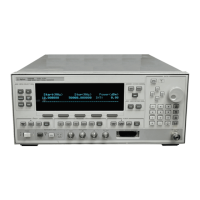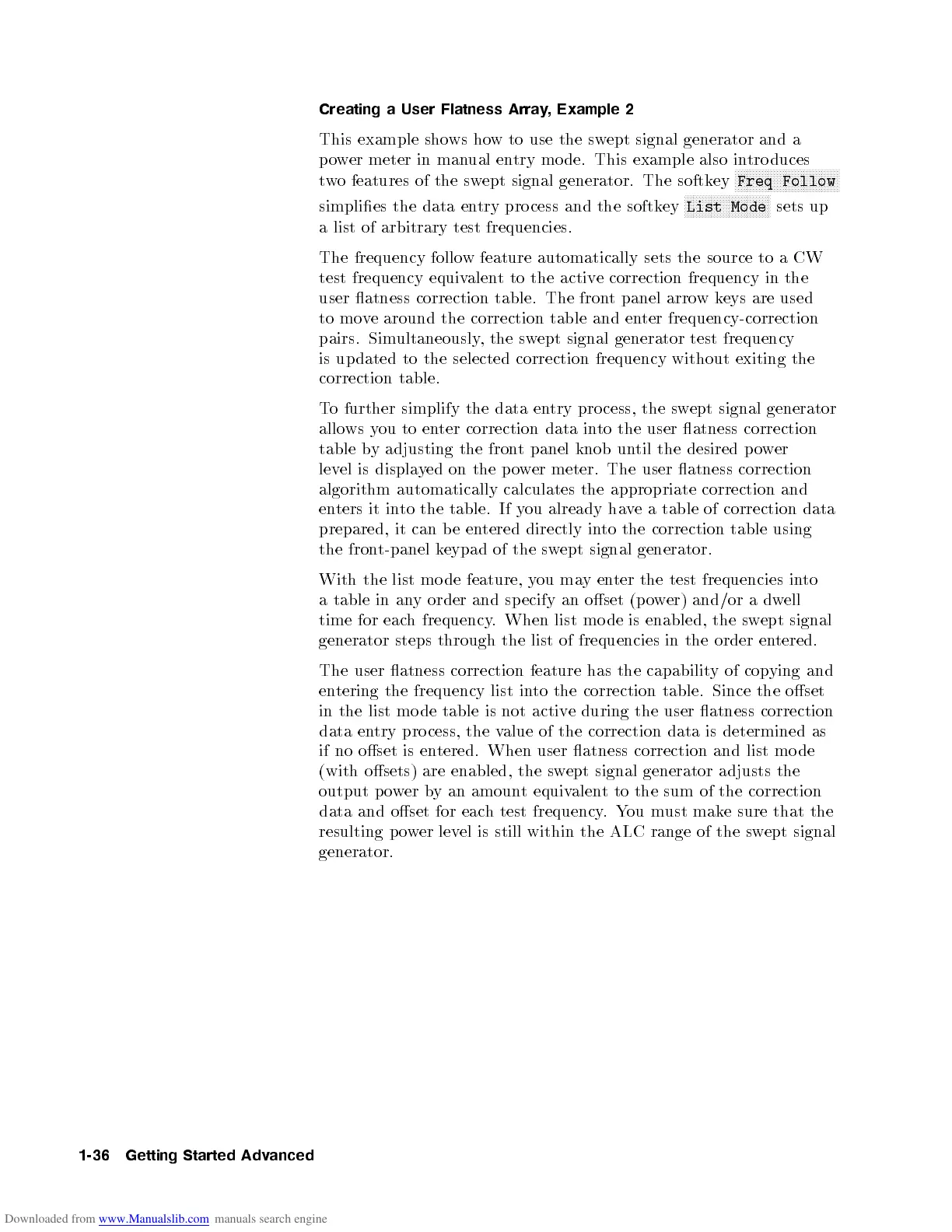Creating a User Flatness Array, Example 2
This example shows how to use the swept signal generator and a
power meter in manual entry mo de. This example also intro duces
two features of the swept signal generator. The softkey
NNNNNNNNNNNNNNNNNNNNNNNNNNNNNNNNNNN
Freq Follow
simplies the data entry pro cess and the softkey
NNNNNNNNNNNNNNNNNNNNNNNNNNNNN
List Mode
sets up
a list of arbitrary test frequencies.
The frequency follow feature automatically sets the source to a CW
test frequency equivalent to the active correction frequency in the
user atness correction table. The front panel arrow keys are used
to move around the correction table and enter frequency-correction
pairs. Simultaneously, the swept signal generator test frequency
is up dated to the selected correction frequency without exiting the
correction table.
To further simplify the data entry pro cess, the swept signal generator
allows you to enter correction data into the user atness correction
table by adjusting the front panel knob until the desired power
level is displayed on the power meter. The user atness correction
algorithm automatically calculates the appropriate correction and
enters it into the table. If you already have a table of correction data
prepared, it can b e entered directly into the correction table using
the front-panel keypad of the swept signal generator.
With the list mo de feature, you mayenter the test frequencies into
a table in any order and sp ecify an oset (p o
wer) and/or a dwell
time for each frequency. When list mo de is enabled, the sw
ept signal
generator steps through the list of frequencies in the order en
tered.
The user atness correction feature has the capability of copying and
entering the frequency list into the correction table. Since the oset
in the list mo de table is not active during the user atness correction
data entry pro cess, the value of the correction data is determined as
if no oset is entered. When user atness correction and list mo de
(with osets) are enabled, the swept signal generator adjusts the
output p ower by an amount equivalent to the sum of the correction
data and oset for each test frequency.You must make sure that the
resulting power level is still within the ALC range of the swept signal
generator.
1-36 Getting Started Advanced

